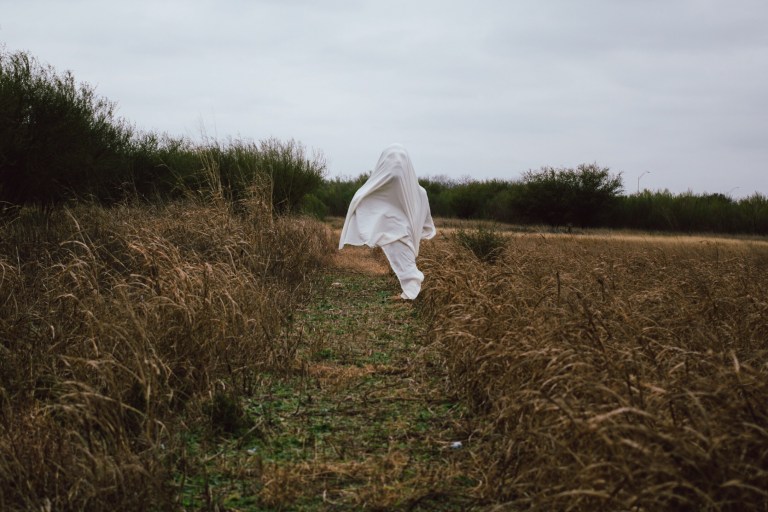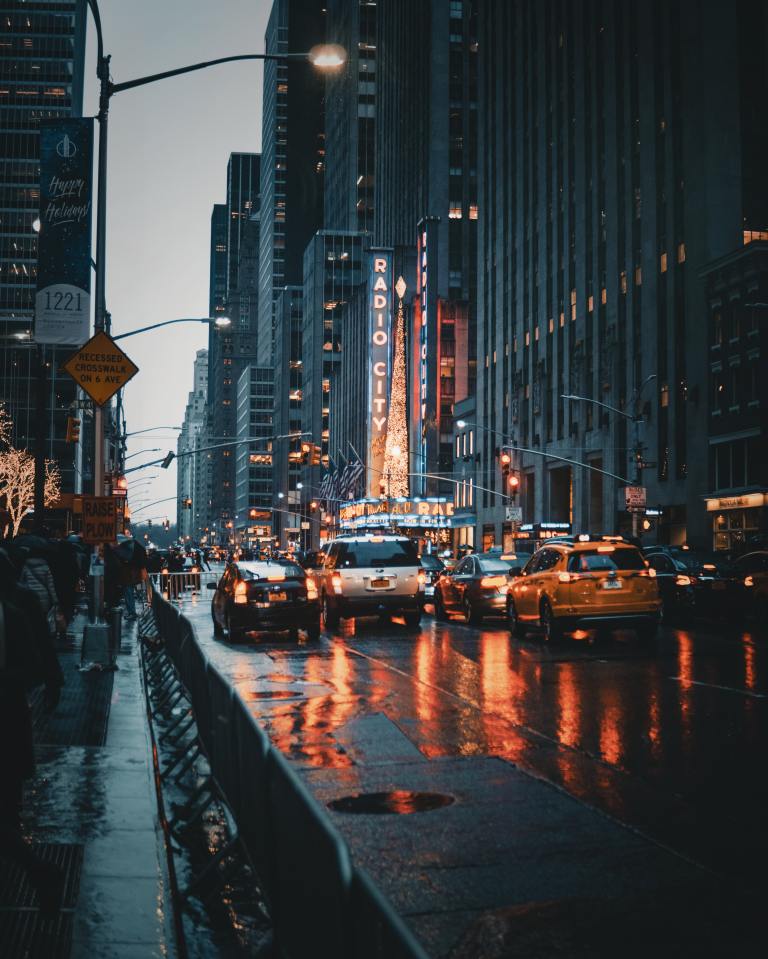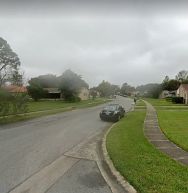Dear New Yorkers, Your Neighborhood Is A Slum
The first thing that hit me when I gazed down on the panorama was the abundance and concentration of flags showing each project.
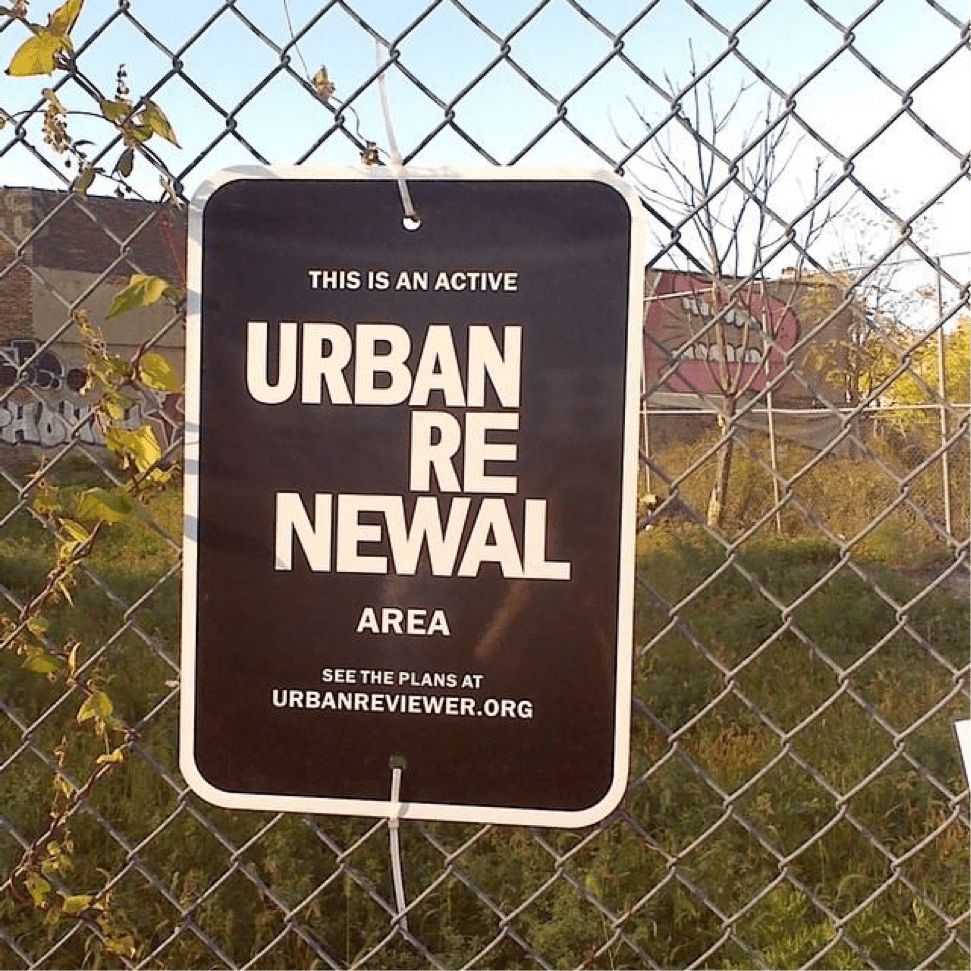
The Most Shocking Realizations About NYC Urban Renewal In 2015
Urban Renewal was a federally funded program that, starting in 1949, allowed municipalities to designate land as ‘blighted’. The program then seized this land, relocating entire communities, and cleared it for development. Never before has the legacy of Urban Renewal been so clearly illuminated for us. For a comprehensive and interactive map of all 155+ Urban Renewal Plans adopted by New York City please visit The Urban Reviewer
This past weekend I paid a visit to the Queens Museum. In the old New York City Pavilion of the 1939 Worlds Fair, you can find the New York City Panorama.
The Panorama, commissioned by Robert Moses for the 1964 World’s Fair, is a more than nine thousand square foot model of every building in New York City built before 1992. There are nearly 900,000 buildings. It is massive. You can view it from all angles via a catwalk with glass floors so you don’t miss a single block. When confronted with the panorama, the vastness of the City spread out before you, viewers really must grapple with how big NYC actually is. You can see how what density in Manhattan looks likes, where the parks are,[1] how we interface with our waterfront, and how the boroughs spread out. You can sometimes even see your house.
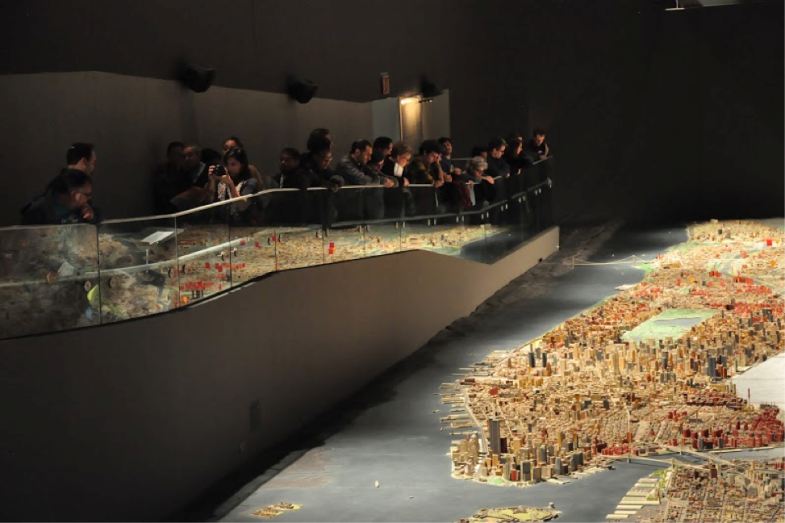
Reviewing Renewal, an exhibition by the organization 596 Acres, points out the locations of every urban renewal project in New York City, is the very fist comprehensive look at all of the renewal projects that were adopted for the city. It is the result of several years of massive effort including examining every block and lot by hand.
The first thing that hit me when I gazed down on the panorama was the abundance and concentration of flags showing each project. Some neighborhoods have been “renewed” quite a bit. During the day’s events I heard from community activists on the front lines dealing with the impacts of Urban Renewal in the Lower East Side, from artists thinking about new ways of working in cities, and from advocates discussing the racist and classist structures that enabled urban renewal to devastate city neighborhoods. I had considered myself well-versed in the historical narrative and consequences of the Federal Urban Renewal Program previously (I did get an Urban Planning degree, after all), but after Reviewing Urban Renewal I am struck by the critical details that often escape the way we talk and think about one of the largest shapers of modern New York City:
Urban Renewal Designated Vibrant, Thriving Communities as “Slums.”
Imagine waking up one day and suddenly your neighborhood is a “slum.” As you walk to get a coffee or a sandwich, you hear someone whispering about how blighted your block is. You walk to the train, and you see your neighbors there too. You nod to your local businessmen as you pass by – the deli owner, the cleaner, the cobbler, the shopkeeper. You know everyone. You grew up here; your first date happened at that pizza place, your learned how to ride a bike in that playground, and you played kickball with the other kids on that street. Then you grew up, moved a couple of blocks, and started your own family; your children play here, and your parents still live here. This is your home, and you know it well. But someone else has come in, and seen what they think is its true nature. They see the “blight” — the older homes and the older stores. Its time to clear this away to make room for new things, to clear away these people and buildings, and replace them with modernity.
This is the reality that faced many communities in New York City in 1949, when the Federal Government began funding “slum clearance.” Enormous sections of the City were bulldozed, having been labeled as blighted. Without real metrics for either being designated a slum, or for what blight really meant, the application of Urban Renewal projects often meant that older, working-class neighborhoods suffered tremendously. Places where multiple generations had lived and laughed together were doomed by the arbitrary rulings of City officials, and community members had no say in defense of their homes. Often this was in service of a modernist style of planning urban spaces: erasing whole streets from the grid and calling the land a “Superblock” on which to put high-rise development. Le Corbusier, an architect famous for this “Towers in the Park” idea foretold of the death of the street, and saw Cities as high-density, high-rise towers for the people, surrounded by greenery at their bases.

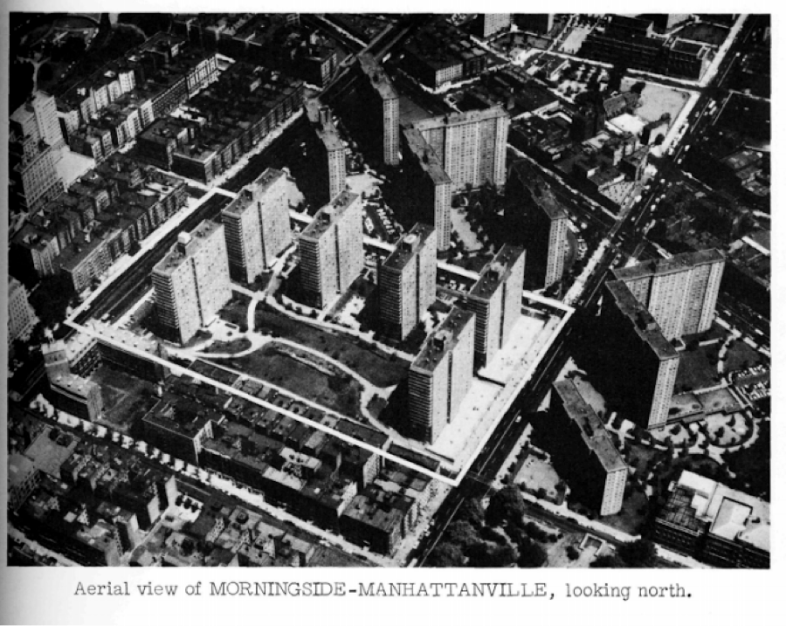

Urban Renewal Promised People They Would Be Able To Come Home. An important part of many of the plans were promises that space in new developments would be made available for original residents to return to. In many cases, there were few actual guarantees, if any at all, to create affordable spaces for original residents and businesses. Moreover, many of these people have moved on, or worse, their former neighborhoods are still waiting for some kind of development, and the space where their home used to be is growing weeds.
In some cases, Urban Renewal Plans also promised open space. The debate on parks equity continues to unfold and communities wonder why wealthier neighborhoods often have access to nicer, better maintained parks while working-class and low-income neighborhoods sometimes have no parks at all. It is important to hold the City accountable for the promises it made when it bulldozed functioning neighborhoods 60 years ago, and see them fulfilled.
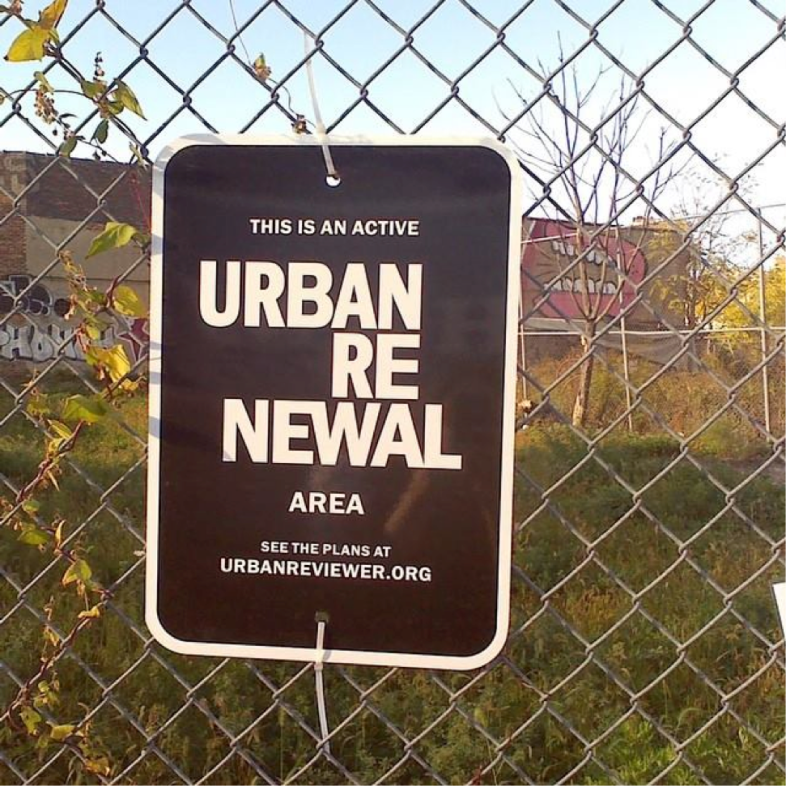
Jenny Akchin, http://596acres.org/en/lot/3022720052/
Urban Renewal Is Racist & Classist.
If you look at the panorama or interactive map, you will notice an abundance of completed or current Urban Renewal projects in certain neighborhoods. Urban renewal dominates the landscape in communities of color in New York City. Harlem and Spanish Harlem, Bedford Stuyvesant, Crown Heights, East New York, Brownsville, Red Hook, The South Bronx, Melrose, Jamaica, Far Rockaway, the Lower East Side: these names read like a roll call for neighborhoods that have historically experienced pervasive problems of racism and classism – from redlining and the withdrawal of City services during financial crisis – to the ongoing plague of tenant harassment, lack of affordability, and resident displacement today.
Urban Renewal and those with the power to use it targeted neighborhoods where “less desirable” people were living. Efforts to clear and relocate these residents were so blatant that the program garnered the nickname “negro removal.”
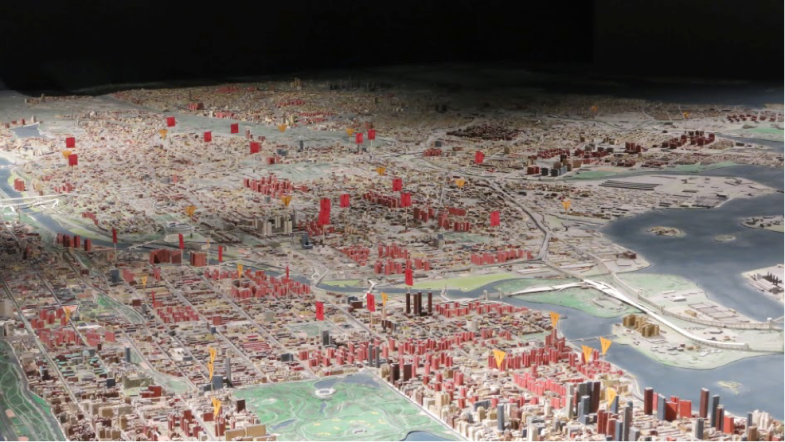

Urban Renewal Made Things Worse.
In some places, cleared land was built upon. The Lincoln center, Columbus Circle, and Bellevue are a few examples of places many New Yorkers visit that were cleared and redeveloped through the program. Other areas, particularly those in the outer boroughs and parts of Northern Manhattan are bereft – no development filled in the empty land after the bulldozers finished clearing the rubble.

For those left behind in these places, these vacant spaces made things worse. A constant reminder of their community’s designation as a “slum,” and the consequent neglect of the City government have served to further disempower and marginalize residents living in places like the Lower East Side, East New York, Harlem, and the South Bronx. In Rockaway, Queens, residents faced the ultimate disempowerment – they and their homes have been cleared, leaving 81 acres of “empty” public land. Only through the work of grassroots organizations and local residents fighting tirelessly to see development that includes and reaffirms their right to healthy, vibrant communities do these long vacant lots begin to see development that truly renews them.


Urban Renewal Is Still Around Today and not just the ghost of sites cleared, but active and open planning sites. Many of these sites are still “active,” meaning that the planning process is still in motion today. Owners of bungalows in Edgemere, on the Bay side of the Rockaway peninsula, are actively receiving purchase offers from the City. This represents a crucial moment for members of impacted communities to come together to push the City for redevelopment that is realistic for the folks who live there, and to fulfill promises of open space, affordable housing, and community centers.
Controversy has surrounded active Urban Renewal site plans in Atlantic Yards, and the Lower East Side. The work of activists and advocates continually calls the City to be transparent about its work, and whom new development supposedly benefits. Development in New York City is often not without controversy, and the more local voices enter the discussion the more likely we are to see fair and equitable use of City resources (the City often gives extensive benefits to developers: tax abatements, cheap leases or sale on land etc).
596 Acres is helping to realize some of these promises. Already two sites made vacant by Urban Renewal have been restored to their communities, functioning as the Open Space they were always meant to be. The Keap Fourth Community Garden and the Edgemere Farm are both examples of how you, the residents of New York, can get engaged in and involved with restoring out-of-use vacant land to public access.
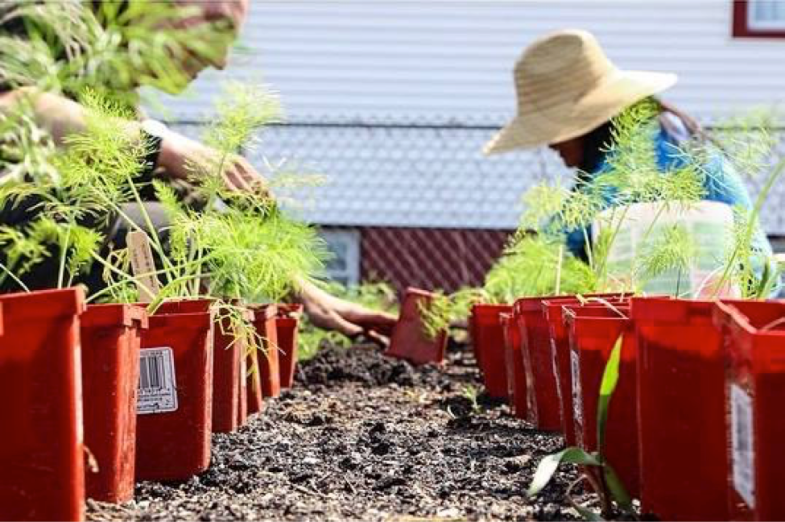
The work of 596 Acres is made possible through the constant effort of its incredible staff. The organization is currently collecting donations to fund its operations through Summer 2015. If you want to get involved go here. If you are interested in donating, click here. To visit Reviewing Renewal, be sure to catch the closing events this Sunday Feb 8th, 3-6pm at the Queens Museum. ![]()

